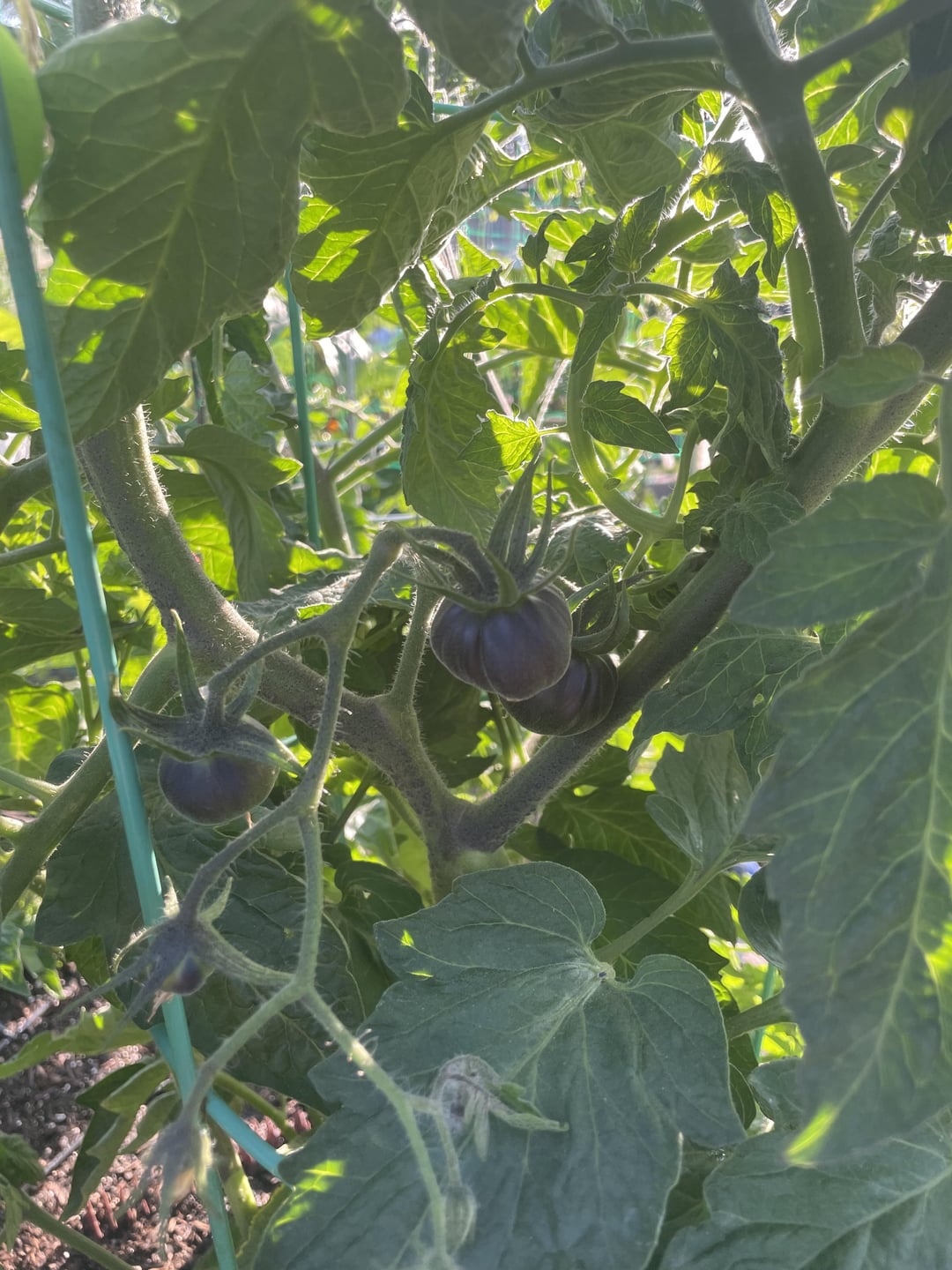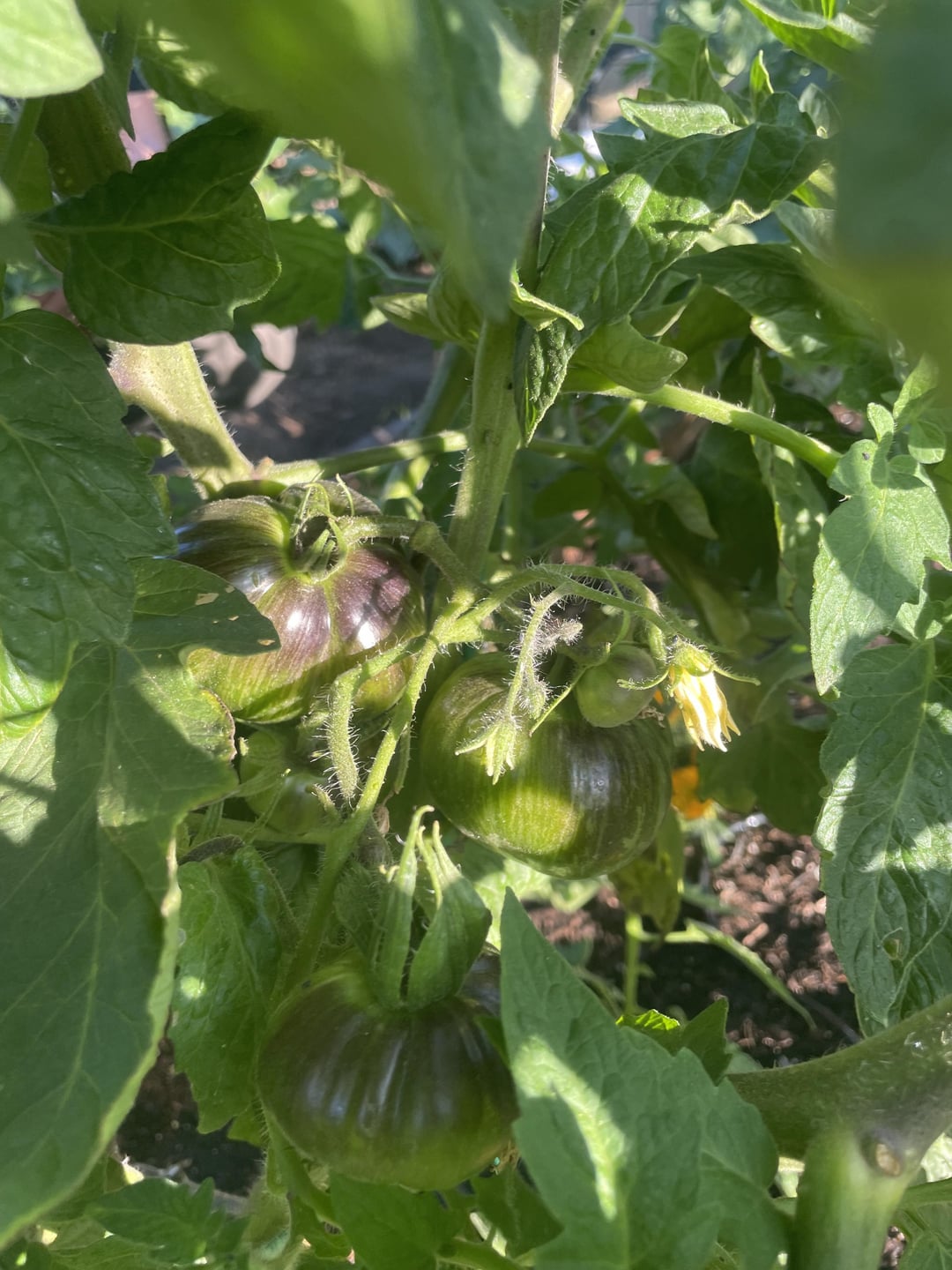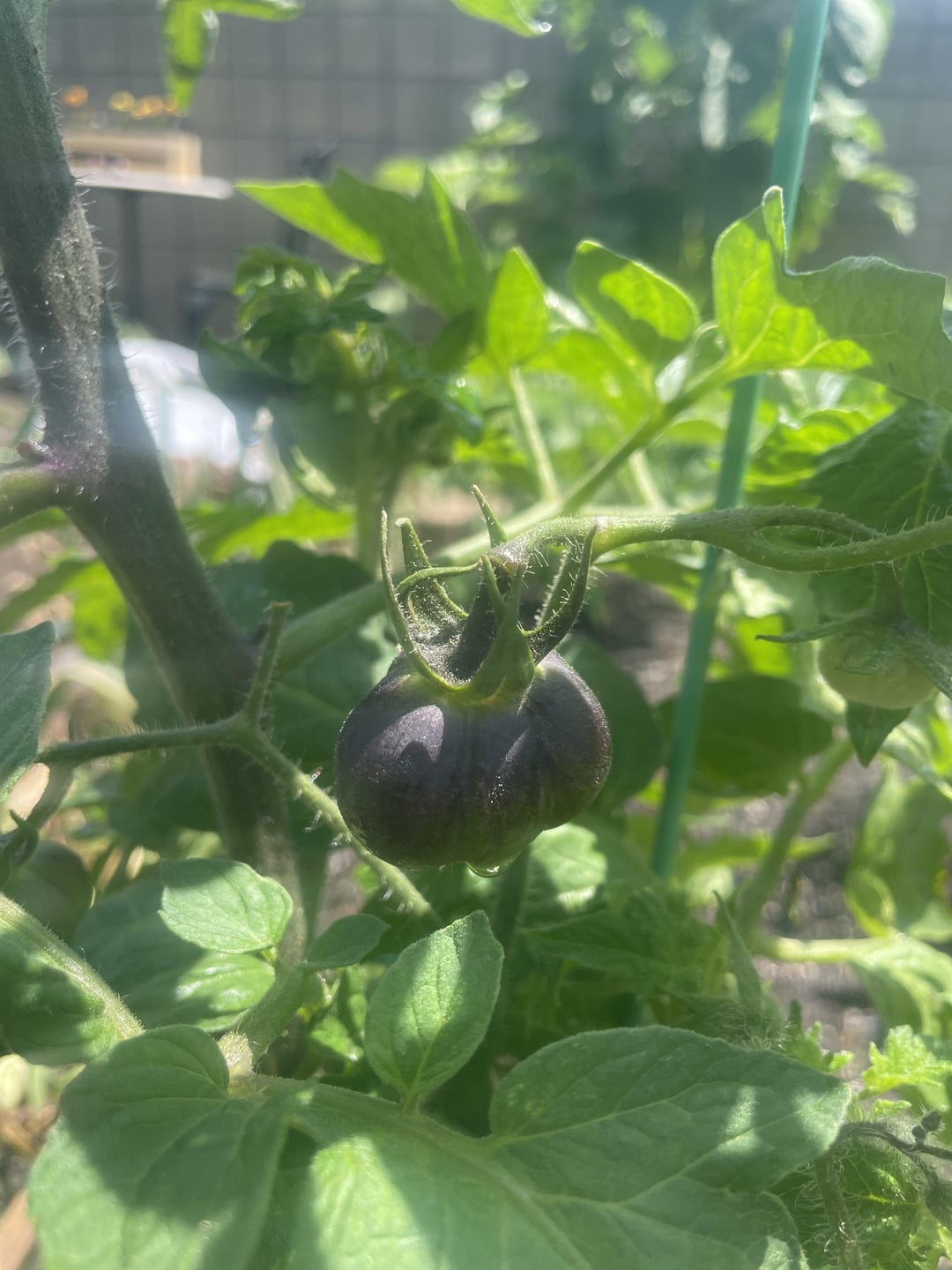


A while ago my neighbor in the community garden im in gave me a small tomato plant to replace the one a critter dug up that I’d grown from seed. He said it was a San Marzano. Turns out, it is definitely not. Btw this is my first time growing tomatoes, if you couldn’t already tell by my newbie question haha.
So I know that when you start to see color you can harvest it and let it sit on the table to finish ripening and coloring up. But what about when the tomato emerges initially with a color? I have no idea how big they will get or what color they will be since they already are dark right out of the gate. I’ve attached some pictures. These are of small just emerging tomatoes.
Any advice would be appreciated. Thanks!
by tu-BROOKE-ulosis


8 Comments
By feel, when there are no visual cues at all (with a few of the green when ripe varieties it’s nearly impossible to tell without touching them….Green Giant, for example, doesn’t — in my conditions — put on a blush or even change hue). You have to get your hand on it & see if there’s any “give”.
But as far as I’m aware, anything that isn’t a GWR type will have some sort of color change; even if the shoulders start out dark & stay dark, the blossom end will change color (and at that point, you can pick it & let it get fully ripe on the counter). I could very well be wrong on that, though — I don’t grow any of the newer types that are *super* dark (i.e. the “blue” vatieties and that sort thing)
Seeing as tomatoes come in many wonderful colors, I would say go by touch. If you squeeze it gently and it gives, I would say it’s good to go! Or if you gently pulling and it comes off, it was ready to leave the plant.
I put some light pressure on that first joint above the fruit. If it snaps free easily, it is ripe enough to pick. Of course, it could still be a breaker, in which case a light squeeze hopefully tells you it’s ripeness.
Squeeze test. If they’re still hard as a rock then they aren’t ready.
I read somewhere when a tomato has a pH value of 4,5 it’s ready
Tomatoes like that have the “indigo” gene, which affects the skin that is hit by the sun. The darkened skin develops right away and is no indication of ripeness. The bottom of the tomato, the green part, will turn red (or yellow if it’s a yellow tomato) when it’s ripe.
Echoing the squeeze test! Most tomatoes are 70-85 (ish) days to maturity, so you can check back on your transplant date to see if you’re close to the window. Tomatoes will smell amazing when they’re ready to be picked, you can try that too. And if you’re still unsure, follow your garden critters’ lead – when they start munching on your fruit you know it’s ready for you too 😊
Skin gets shiny, fruit is a little more tender to the touch. There is often a change in color, but not always: some fruit is green when ripe.
Fruit stops getting bigger and starts changing color. This is when fruit that is prone to cracking may crack, if there is heavy rain.
Tomato fruit has a certain structure that includes a tough outer skin. The skin is either clear or yellow at maturity. A red tomato has pink flesh and a yellow skin. A pink tomato has pink flesh and a clear skin. Black tomatoes are both pink and green fleshed with yellow skin when mature. Purple tomatoes have clear skin.
Some tomatoes have yellow or orange flesh.
Usually, it’s best to let the fruit mature on the vine. Exceptions: thirsty birds peck holes in shoulders or heavy rain is coming.
If circumstances allow, let the fruit on this mystery plant grow then mature. It’s always interesting to see what you find.